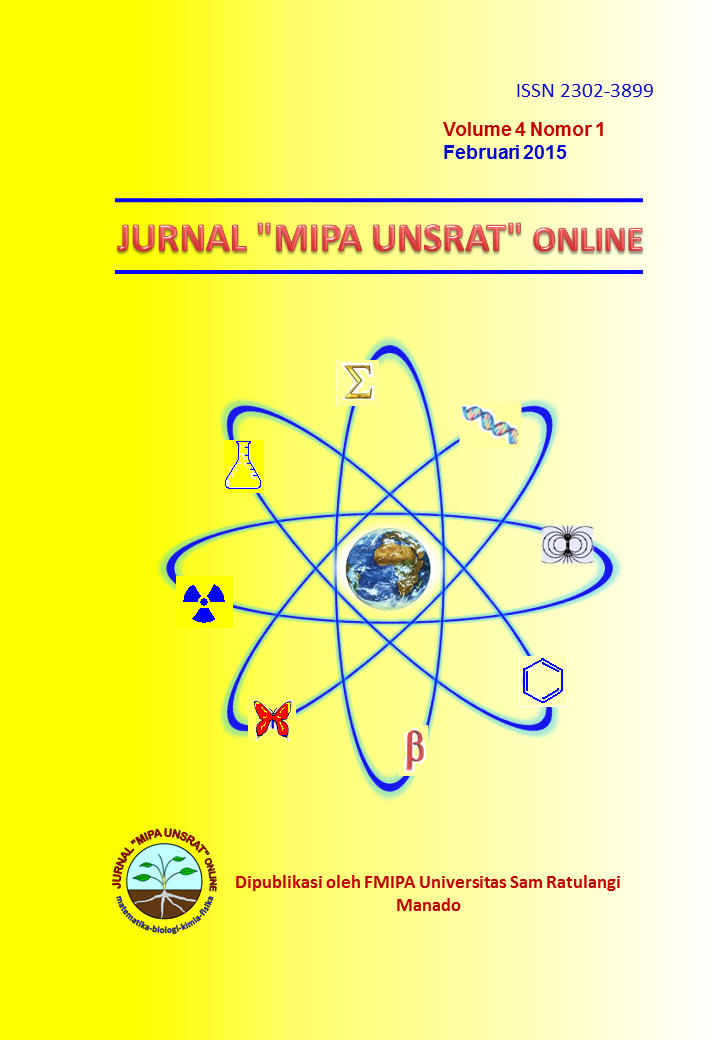Pengujian Dua Pasang Primer Universal Untuk Amplifikasi Gen Cytochrome Oxidase I Copepoda
DOI:
https://doi.org/10.35799/jm.4.1.2015.6912Abstract
Copepoda merupakan zooplankton kaya manfaat dengan diversitas yang sangat tinggi dan terdiri dari banyak spesies kriptik. Identifikasi cepat, akurat, dan hemat dapat dilakukan dengan menggunakan teknik DNA Barcoding. Kesuksesan teknik tersebut sangat dipengaruhi oleh penggunaan primer yang tepat. Tujuan penelitian ini adalah untuk menguji kemampuan dua pasang primer universal, yakni LCO1490-HCO2198 dan FF2d-FR1d, mengamplifikasi gen COI Copepoda. Dalam penelitian ini, pasangan primer LCO1490-HCO2198 tidak berhasil mengamplifikasi gen target. Sekuens-sekuens hasil amplifikasi menggunakan pasangan primer FF2d-FR1d diidentifikasi melalui BLAST. Hasil yang diperoleh menunjukan bahwa sekuens-sekuens tersebut memiliki persentase kemiripan sebesar 92% dengan bakteri Pandoraea pnomenusa. Melalui hasil yang didapatkan disimpulkan bahwa kedua pasangan primer universal LCO1490-HCO2198 dan FF2d-FR1d tidak cukup spesifik untuk amplifikasi gen cytochrome oxidase I Copepoda.
Copepoda is a very beneficial and highly diverse zooplankton with many cryptic species. A fast, reliable, and affordable identification can be done through DNA Barcoding. The success of this technique is affected by the usage of correct primers. The aim of this research was to test the ability of two universal primer pairs, which were LCO1490-HCO2198 and FF2d-FR1d, amplifying COI gene of Copepoda. In this research, LCO1490-HCO2198 primer pairs weren’t able to amplify COI gene of Copepoda. Sequences which were successfully amplified using FF2d-FR1d primer pairs were identified through BLAST. The result shows that the sequences are 92% similar to bacteria named Pandoraea pnomenusa. It can be concluded that both primer pairs are not specific enough to amplify cytochrome oxidase I gene of Copepoda.






